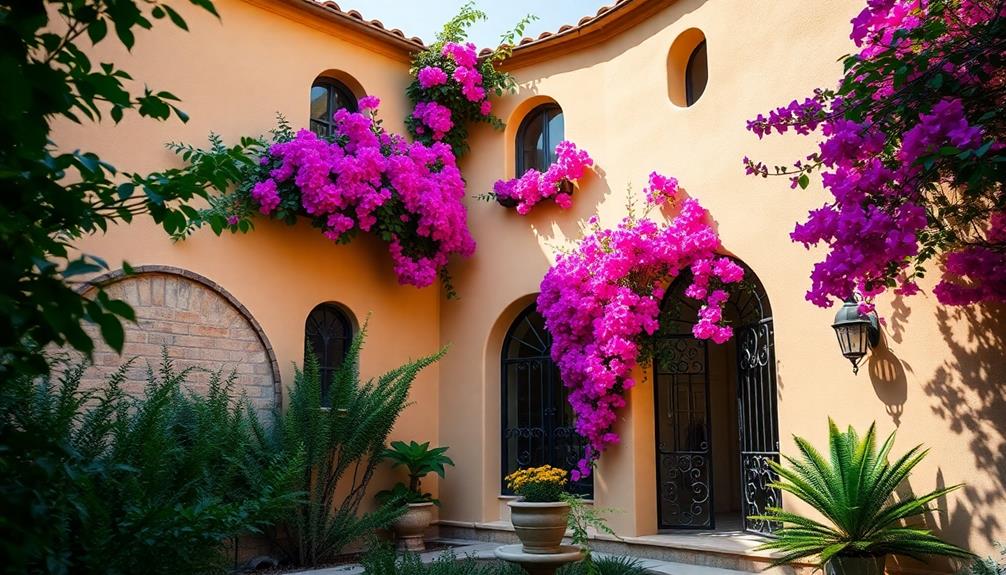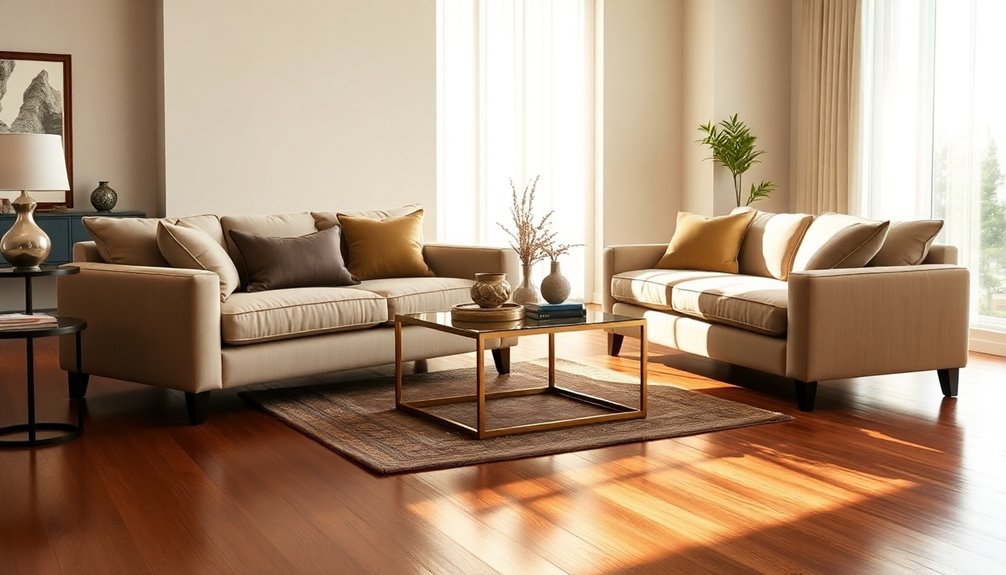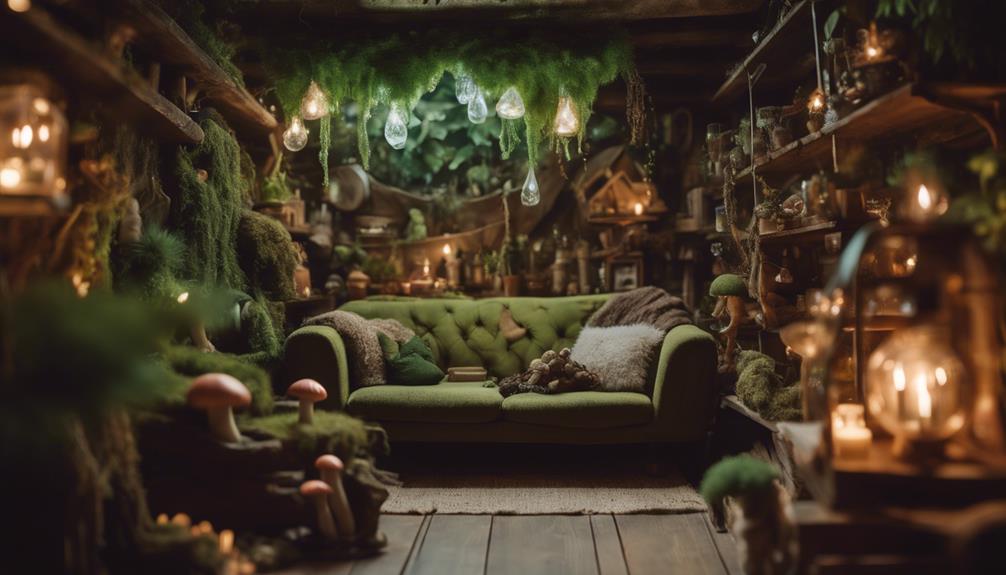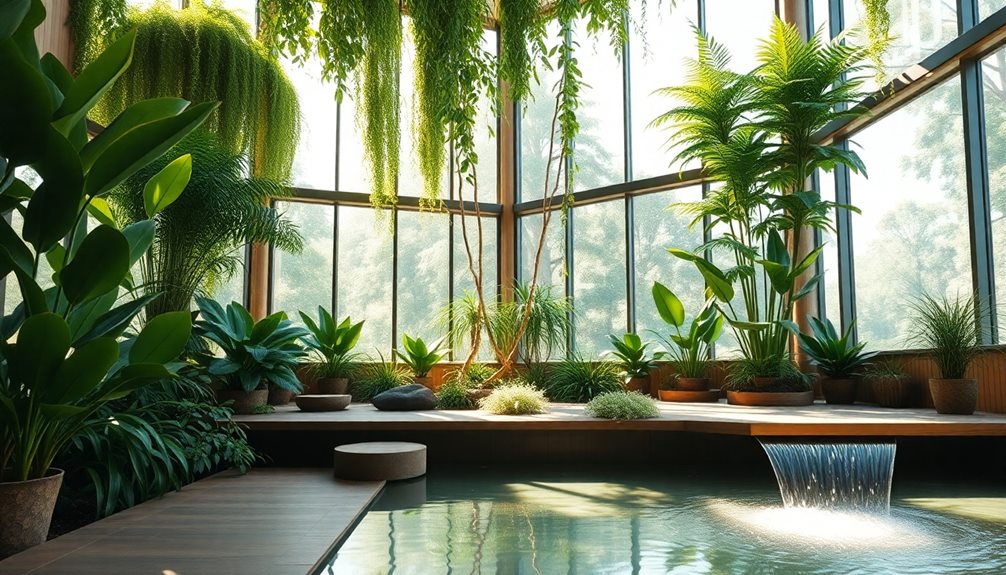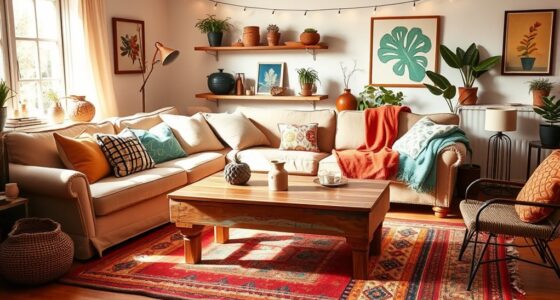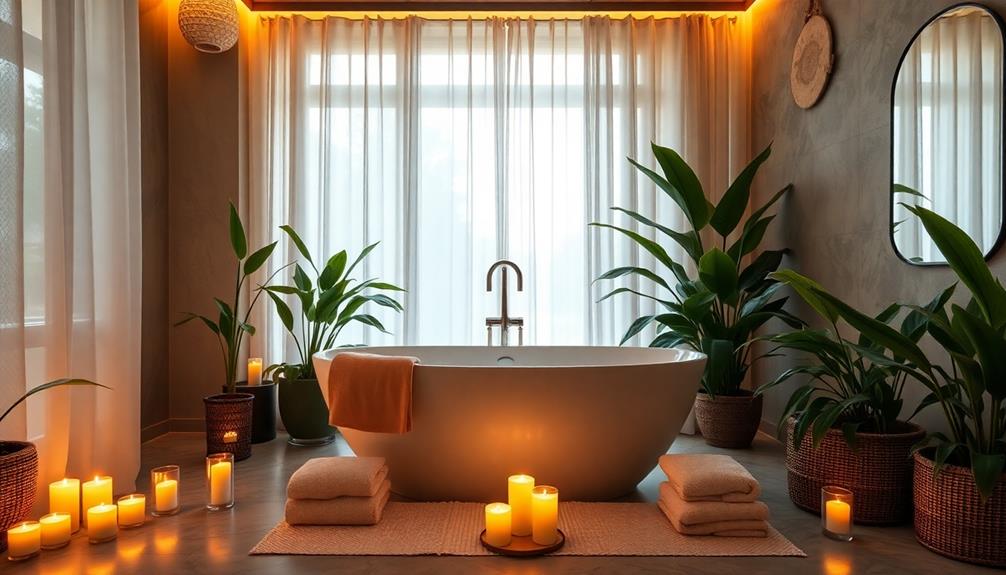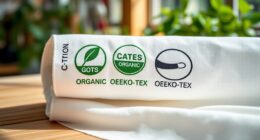Spanish stucco captivates with its deep-rooted history and breathtaking aesthetics. You will admire how the warm, earthy tones and textured surfaces create a cozy ambiance. Authentic arches and rich wooden details bring depth and sophistication to your living space. Each finish narrates a story of skilled artistry, embracing the cultural blend of various architectural designs. Whether in the sun-drenched South of Spain or lively coastal areas, Spanish stucco effortlessly blends in, mirroring its environment. Its resilience makes it a classic option for both contemporary and classic residences. Uncover the mysteries that make this style timeless and attractive in today’s architectural world.
Key Takeaways
- Spanish stucco features distinctive design elements such as true arches and barrel tiles, enhancing its elegant aesthetic.
- The earthy color palette, including terracotta and creamy whites, creates a warm and inviting atmosphere.
- Various textured finishes, achieved through traditional techniques, showcase exceptional craftsmanship and authenticity.
- Its historical significance reflects a rich cultural fusion from ancient Rome to Spanish colonial architecture.
- Regular maintenance ensures the longevity of Spanish stucco, preserving its timeless beauty for generations.
Characteristics of Spanish Stucco
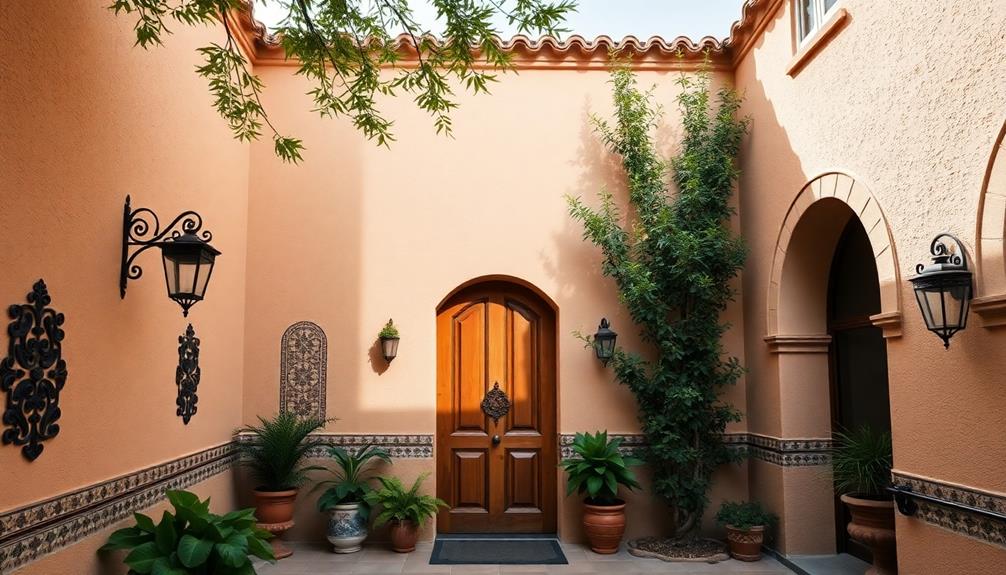
When you first encounter Spanish stucco, its distinctive design elements immediately draw you in. The barrel or S-shaped reddish roof tiles create a striking silhouette against the sky, while true arches on windows and doors enhance both tradition and elegance.
You'll notice how dark colors, like black oil-rubbed bronze, contrast beautifully with light stucco walls, adding depth and sophistication. Gable vents and various stucco textures enrich the authenticity of the style, showcasing meticulous attention to detail that enhances visual appeal.
Reddish roof tiles complement the walls perfectly, while dark window colors create striking contrasts. Together, these elements evoke a sense of warmth and history, making Spanish stucco a timeless choice for any architectural design.
Earthy Color Palette
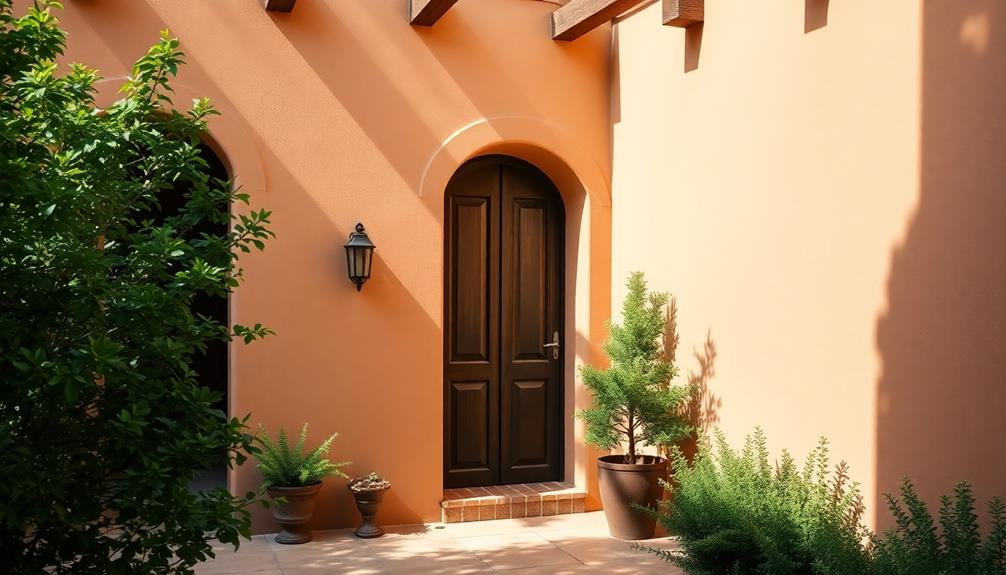
The warm, earthy color palette of Spanish stucco plays an essential role in creating an inviting atmosphere. The rustic tones of terracotta, ochre, and sienna effortlessly blend to evoke a sense of timeless charm and comfort. Complemented by soft lighting and natural textures, this style provides endless inspiration for cozy winter escape ideas that transform any space into a retreat from the chill. Whether accented with lush greenery or layered with warm textiles, Spanish stucco invites relaxation year-round.
You'll find hues like terracotta, beige, and creamy whites that beautifully echo the natural tones of Spanish landscapes. These colors evoke warmth and welcome, complementing traditional terracotta roof tiles and wooden accents.
Earth tones such as ochre and soft browns enhance the home's connection to the environment. You can also incorporate brighter colors like turquoise and yellow to reflect regional influences, adding a vibrant touch to your space.
White stucco symbolizes purity and is common in Mediterranean designs, while natural pigments derived from minerals enrich the color's vibrancy, making your home feel both timeless and alive.
Textured Finish Techniques
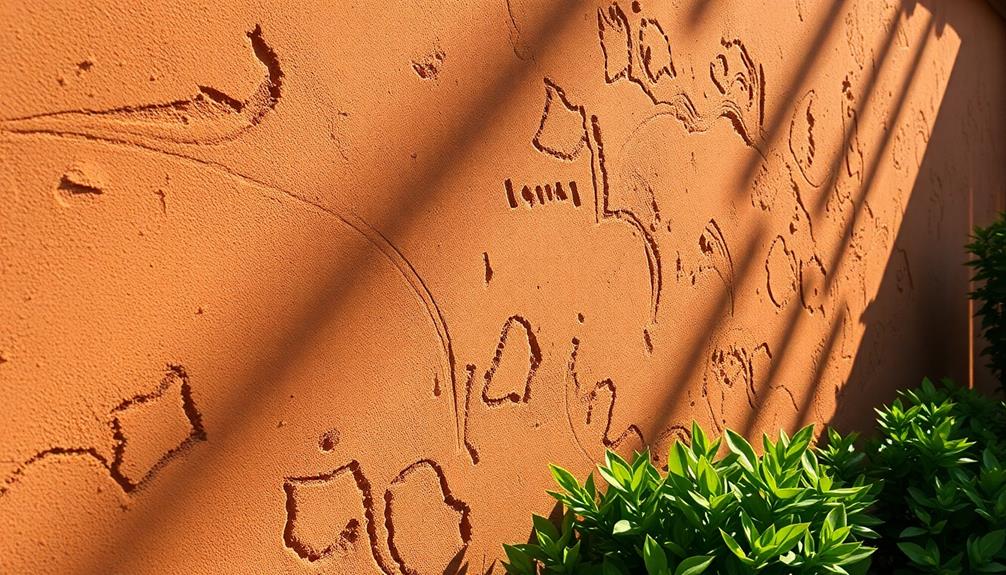
With a range of textured finish techniques, Spanish stucco adds depth and character to your home's exterior. You can explore various finishes like smooth surfaces, sand textures, and intricate lace patterns. Each option contributes to the unique charm of your walls.
Traditional methods, such as hand-troweling and layering, create authentic textures, while lime-based stucco offers breathability and flexibility. If you're looking for durability, modern techniques may include synthetic additives, ensuring your stucco withstands the test of time.
You can choose to integrate color during the mixing process or apply it as a final coat for a stunning effect. Whichever technique you select, your home will surely reflect the timeless beauty of Spanish stucco.
Historical Significance
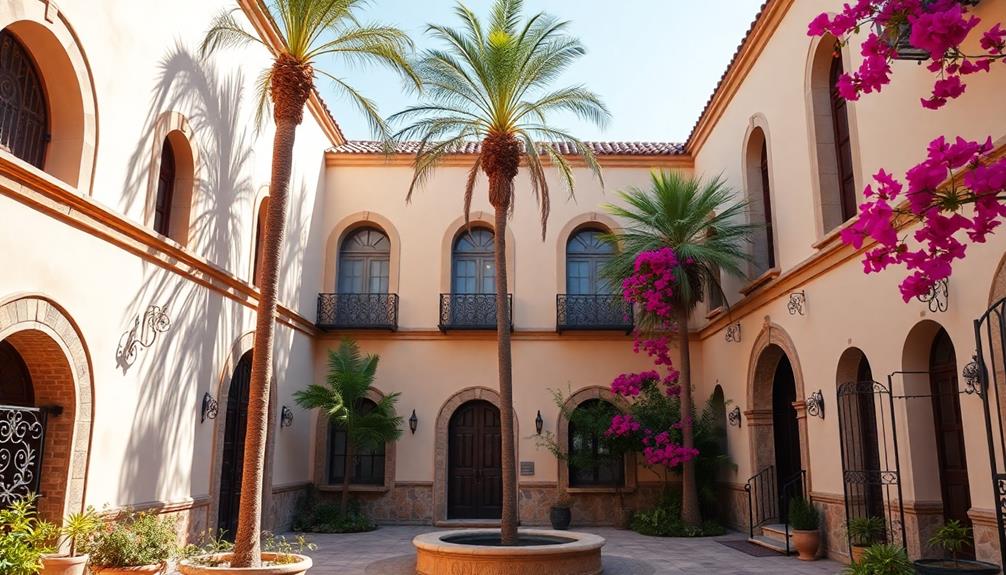
Building on the textured finishes that define Spanish stucco, understanding its historical significance reveals how this architectural choice has evolved over centuries.
Originating in ancient Rome, stucco gained prominence during the 16th century in Spanish colonial architecture, embracing cultural influences from Moorish, Renaissance, and Baroque styles.
As you explore traditional Spanish architecture, you'll notice how textured stucco walls, often adorned with true arches and dark wood accents, create an authentic aesthetic.
This architectural element not only showcases craftsmanship but also tells a story of cultural fusion and adaptation.
Traditional Architectural Features
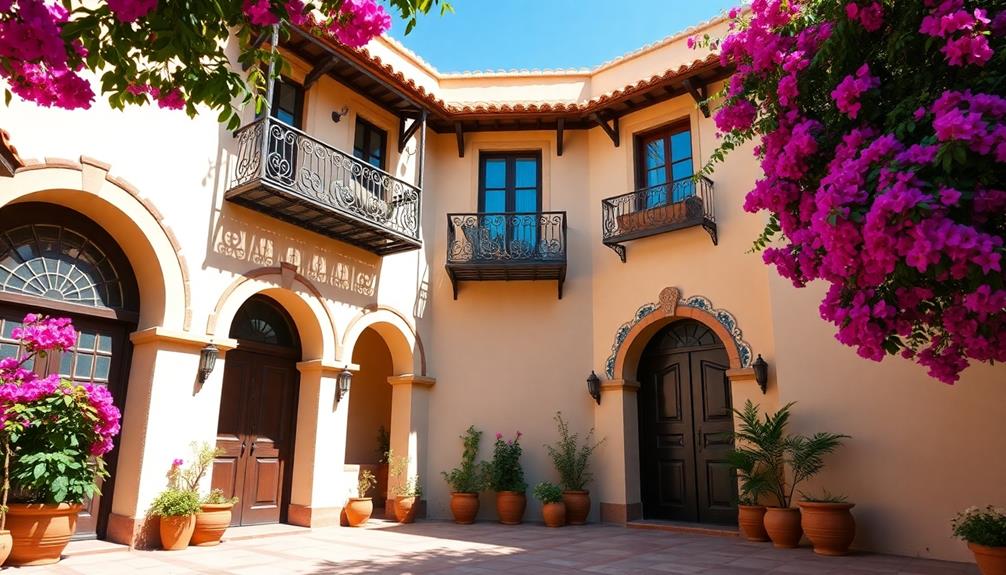
When you step into a traditional Spanish architectural space, the distinctive features immediately draw you in, reflecting a rich cultural heritage.
You'll notice the elegant true arches that frame windows and doors, inviting natural light while enhancing the aesthetic. The reddish barrel tiles on the roof create a striking contrast against the light-colored stucco walls, drawing your eye upward.
Dark wood accents provide warmth and depth, while gable vents add both function and charm. Each textured stucco finish tells a story, showcasing meticulous craftsmanship.
You can't help but appreciate the darker tones used for windows and doors, which emphasize the overall design. These traditional elements come together to create an inviting atmosphere that truly embodies the beauty of Spanish architecture.
Regional Variations
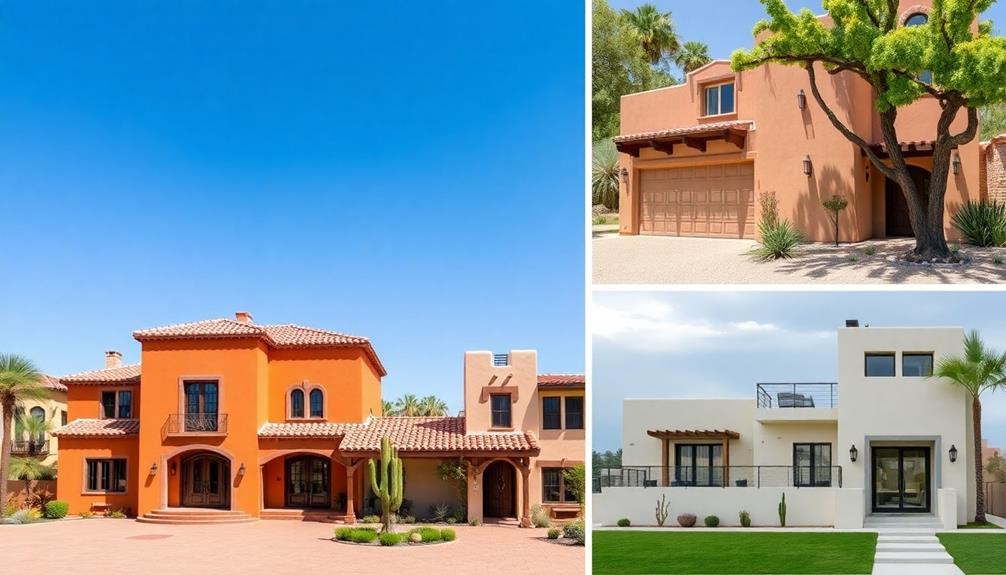
Regional variations in Spanish stucco reflect the diverse landscapes and cultural influences across different areas.
In southern Spain, you'll notice warmer hues that mirror the sun-baked earth, while coastal regions often opt for lighter shades to maximize sunlight reflection.
Urban settings may embrace bolder colors, adding a vibrant touch, while rural designs typically favor muted tones that harmonize with nature.
Each region's unique climate and environment shape these choices, showcasing the adaptability of stucco.
You might find terracotta accents in traditional homes, which pair beautifully with earthy stucco finishes.
This diversity enriches the aesthetic appeal, making Spanish stucco not just a building material, but a reflection of the culture and character of its surroundings.
Maintenance and Preservation
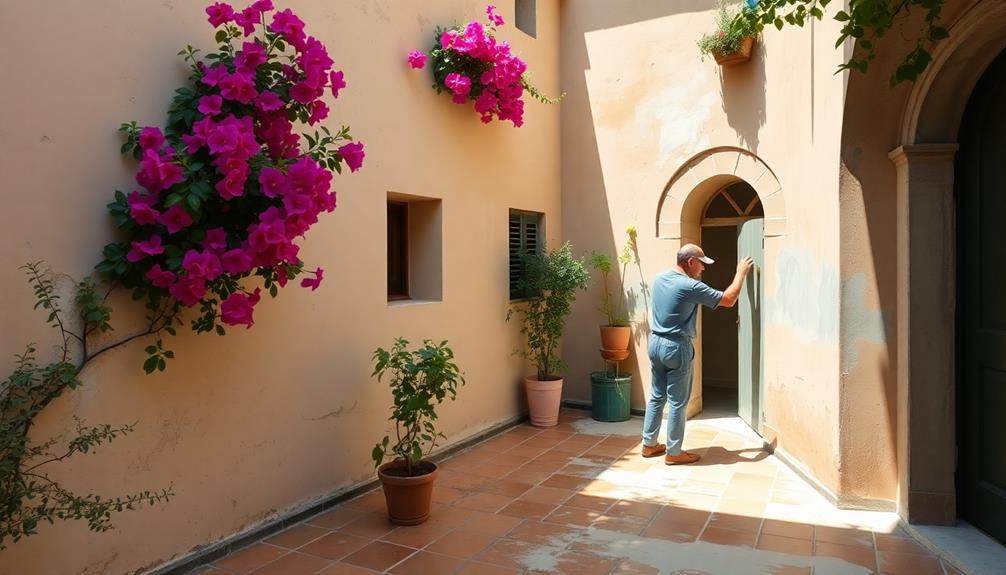
Proper maintenance and preservation of Spanish stucco is essential to guarantee its longevity and aesthetic appeal. You should inspect your stucco regularly for cracks or fading, addressing any issues promptly to prevent further damage.
Repainting every 5-10 years is vital, especially in harsh climates. Use environmentally-friendly paints that honor traditional colors and textures. To maintain the unique character, make certain any restoration techniques match the original materials, following historic preservation guidelines.
Additionally, keep your stucco clean by washing it gently with water and mild detergent to remove dirt and grime. This will preserve its beauty and charm.
Frequently Asked Questions
What Are the Benefits of Using Stucco Over Other Siding Materials?
Using stucco offers durability and low maintenance compared to other siding materials. Its energy efficiency keeps your home comfortable, while the unique textures and colors enhance curb appeal, giving your property a distinct aesthetic charm.
Can Stucco Be Used in Modern Architectural Designs?
Yes, you can absolutely use stucco in modern architectural designs. Its versatility allows for various textures and colors, adding depth and character while maintaining a contemporary aesthetic that complements other materials beautifully.
How Does Stucco Perform in Different Weather Conditions?
You might be surprised to learn that stucco excels in various weather conditions. Its breathability prevents moisture buildup, while durability withstands harsh climates, making it an adaptable choice for both hot and cold environments.
What Is the Cost Comparison Between Stucco and Other Exterior Finishes?
When comparing costs, stucco tends to be more affordable than brick or stone but can be pricier than vinyl siding. You'll appreciate its durability and low maintenance, making it a worthwhile investment in the long run.
Are There Eco-Friendly Stucco Options Available on the Market?
Yes, there are eco-friendly stucco options available. You can choose lime-based stucco or synthetic alternatives that incorporate recycled materials. These options reduce environmental impact while providing durability and breathability, perfect for sustainable building practices.
Conclusion
In embracing Spanish stucco, you're not just enhancing your home; you're celebrating history, savoring beauty, and inviting warmth. With its earthy colors, textured finishes, and timeless charm, this architectural style transforms spaces into serene sanctuaries. Whether you're captivated by its rich heritage or drawn to its unique character, Spanish stucco offers a connection to the past while enriching your present. So go ahead, infuse your living space with this enchanting elegance and let your home tell a story.
